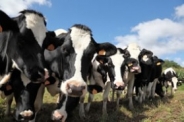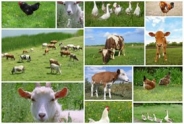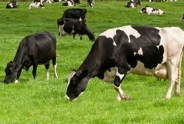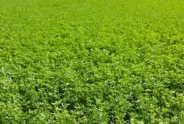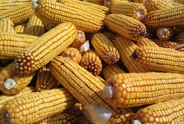Planting Tips for Winter Wheat
Mike Stanyard, Team Leader and Field Crops & IPM Specialist
Northwest New York Dairy, Livestock & Field Crops
September 18, 2015

Winter wheat production for New York is forecasted at 7.43 million bushels, up 24 percent from the 2014 crop. Acreage for harvest is forecast at 118 thousand acres, up 23 thousand from last year. Yields are expected to average 63 bushels per acre, unchanged from last year (Blair Smith, State Statistician of USDA's National Agricultural Statistics Service, New York Field Office on 8/17).
Planting Dates. Ideally, September 15 has been a good starting point for Western NY. This has been traditionally based on the timing of the average first frost that would eliminate any Hessian flies. Fly-free dates can vary based on feet above sea level and distance south of Lake Ontario. Starting dates can range as early as September 6th at 1500 ft. in Seneca County to September 17th at 400 ft. in Niagara County.
Variety Selection. Cornell has released the yield results of the 2015 red and white winter wheat trials from across the region (Monroe and Livingston counties locally). These results can be viewed at our team web site, www.nwnyteam.org, or send me an email and I'll forward a copy to you.
Seeding Rates. Seeding rates should increase as the season gets later and should also be adjusted based on soil conditions (See chart). Seeds should be drilled 1-1.5 inches deep for good emergence. See examples below on how to calculate million/pounds of seed per acre.
Live seed % = Recommended rate / Percentage of live seed = Rate/acre
Example: 1,350,000 seeds / .90 live seeds = 1.48 million seeds/acre
To figure out how many pounds per acre, use the following formula.
Seeds per acre / # seeds/lb. = lb./acre Example: 1,450,000 / 13,000 = 111.5 lb./acre
Starter Fertilizer. I still remember Peter Johnson's presentation at Soybean and Small Grains Congress which emphasized that if you are not using a starter fertilizer, then you are leaving 8 bushels on the table. He stressed that phosphorus was most important for wheat. He used the example that while soybeans only need 1 pound of P and corn 5 pounds for strong seedling establishment, wheat needs 15 pounds. Follow your soil sample recommendations and remember wheat grows best at a pH around 6.3. I have seen an increase in the number wheat growers putting a starter down with great end results!
Broadleaf and Grass Weed Management. Winter annual weeds are the most prevalent weed competitors for our winter wheat. Chickweed, purple dead nettle, shepherd's purse, corn chamomile and others in the mustard family emerge right along with the wheat crop in the fall and can really pull down yields. Many producers spray with Buctril or Harmony Extra in the fall so they are starting clean in the spring. This is also the best option if you plan to underseed your wheat with clover in the spring. Annual and roughstalk bluegrass and cheat populations continue to increase across the region. These grasses also emerge in the fall right along with the wheat. Russ Hahn did some field research last year with Osprey and preliminary results show better control when applied in early spring versus the fall.
Seeding Rate (pdf; 252KB)
Upcoming Events
Cornell Cow Convos Podcast- Episode 8 Release
April 25, 2024
Cornell Cow Convos-Episode 8
Western NY Value-Added Dairy Discussion Group: Jess May- Farm Credit East Webinar
May 2, 2024 : Value-Added Dairy Discussion Group Webinar: Jess May- Farm Credit East
Western NY Value-Added Dairy Discussion Group: Eden Valley Creamery
May 3, 2024
South Dayton, NY
Announcements
Follow us on Instagram
See photos and reels of our most recent events and programs!Join us on Facebook!
Follow us on Facebook to get up to date posts about events, workshops and everything NWNY!Add us on LinkedIn!
Connect with us on LinkedIn to get more information about upcoming workshops and programs!

